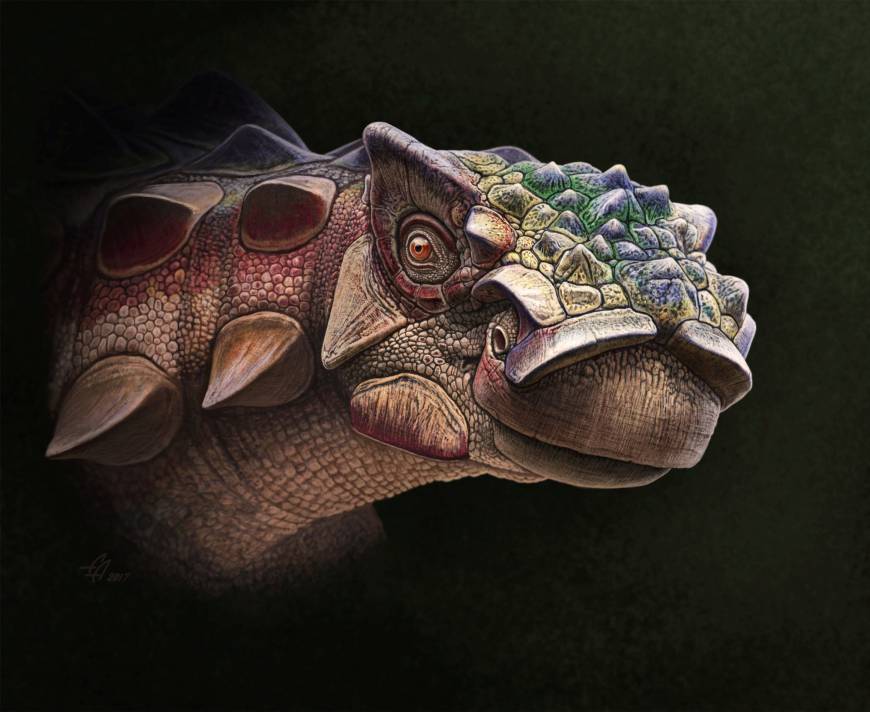Current science news briefs: Spiky Utah dinosaur and much more
Work on the road has been temporarily halted while the scientists study the contents of the cave, which include the bones of rhinos, elephant-like creatures, and hyenas.

Following is a summary of current science news briefs.
Mystery Egypt sarcophagus found not to house Alexander the Great's remains
Egyptian archaeologists on Thursday dashed local hopes that a newly discovered ancient sarcophagus might contain the remains of Alexander the Great, finding instead the mummies of what appeared to be a family of three. Workmen inadvertently unearthed the approximately 2,000-year-old black granite sealed sarcophagus this month during the construction of an apartment building in the historic Mediterranean port city of Alexandria.
Deep reefs won't be 'twilight zone' refuge for fish, corals: study
Deep coral reefs in a "twilight zone" in the oceans differ sharply from those near the surface, dimming hopes that they can be a refuge for marine life fleeing threats such as climate change and pollution, scientists said on Thursday. Worldwide, coral reefs in shallow waters are among ecosystems most threatened by climate change. The Great Barrier Reef off Australia suffered severe bleaching, a whitening driven by warm waters that can kill corals, in 2016 and 2017.
NASA prepares to fly probe into Sun's scorching atmosphere
NASA is preparing to send a probe closer to the Sun than any other spacecraft has ventured, enduring wicked heat while zooming through the solar corona to study this outermost part of the stellar atmosphere that gives rise to the solar wind. The Parker Solar Probe, a robotic spacecraft the size of a small car, is slated to launch from Cape Canaveral in Florida, with Aug. 6 targeted as the launch date for the planned seven-year mission. It is set to fly into the Sun's corona within 3.8 million miles (6.1 million km) from the solar surface, seven times closer than any other spacecraft.
Bones of prehistoric creatures discovered in Crimean cave
Scientists in Crimea are poring over a mass of preserved animal bones dating back half a million years after workmen discovered a sprawling underground cave during the construction of a motorway. Work on the road has been temporarily halted while the scientists study the contents of the cave, which include the bones of rhinos, elephant-like creatures, and hyenas.
Spiky Utah dinosaur had more than 'a face only a mother could love'
With its head and snout covered in bony armor shaped like cones and pyramids, a spiky tank-like dinosaur unearthed in southern Utah was not just another pretty face. Scientists on Thursday announced the discovery of fossils of a dinosaur named Akainacephalus johnsoni that lived 76 million years ago during the Cretaceous Period. It was a four-legged, armor-studded plant-eater with a menacing club at the end of its tail.
(This story has not been edited by Devdiscourse staff and is auto-generated from a syndicated feed.)
- READ MORE ON:
- study
- corals
- Thursday
- unearthed
- scientists
- construction
- surface
- Sun
- fly
- solar
ALSO READ
Katchatheevu issue didn't surface suddenly; it's a live issue, often debated in Parliament: External Affairs Minister S Jaishankar.
IIT Indore develops natural foaming agent from cow dung, to be used for construction purposes
BRIEF-TSMC Says Suspended Work At Construction Sites For April 3, Will Resume Following Further Inspections
First batch of 60-plus Indian construction workers leaving for Israel: Envoy
Scientists devise method to extract airborne DNA for forensic analysis in new study










